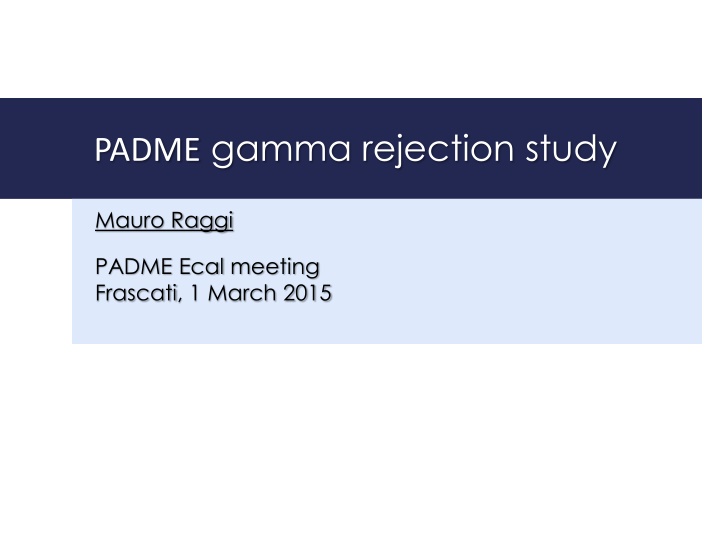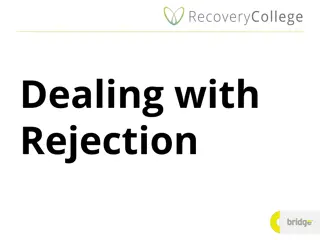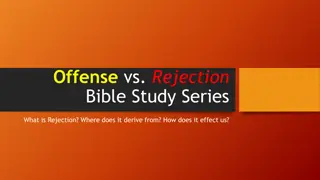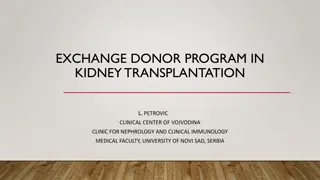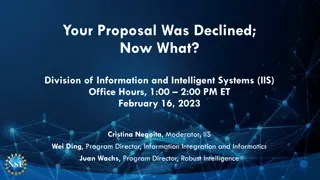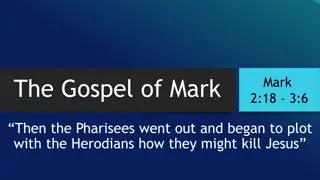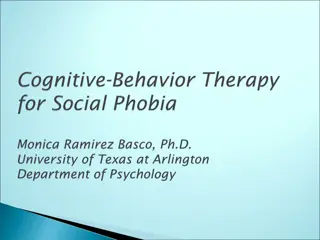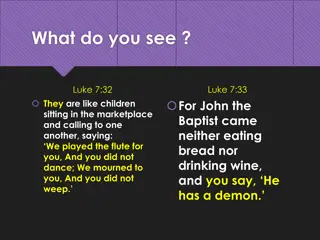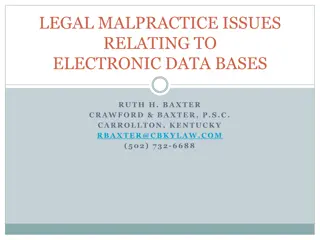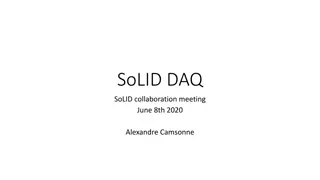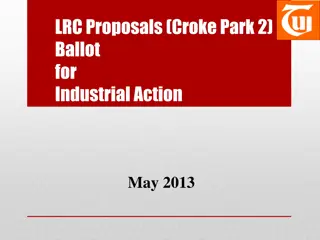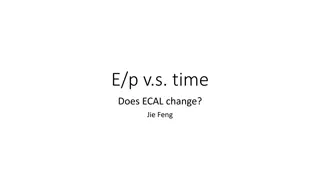Insights from PADME ECal Meeting: Rejection Studies and BG Analysis
Explore the discussions and findings from the PADME ECal meeting on topics such as gamma rejection studies, toy MC studies of gamma background, ECAL geometrical definitions, BG studies, and detector acceptance. Key points include the proposal for a lead glass-based SAC and considerations on inefficiency and timing performance for the photon veto system.
Uploaded on Sep 19, 2024 | 2 Views
Download Presentation

Please find below an Image/Link to download the presentation.
The content on the website is provided AS IS for your information and personal use only. It may not be sold, licensed, or shared on other websites without obtaining consent from the author.If you encounter any issues during the download, it is possible that the publisher has removed the file from their server.
You are allowed to download the files provided on this website for personal or commercial use, subject to the condition that they are used lawfully. All files are the property of their respective owners.
The content on the website is provided AS IS for your information and personal use only. It may not be sold, licensed, or shared on other websites without obtaining consent from the author.
E N D
Presentation Transcript
PADME gamma rejection study Mauro Raggi PADME Ecal meeting Frascati, 1 March 2015
Outline Definition of ECAL and SAC geometry Angular coverage of photon veto system in PADME 2g and 3g final state toy MC study 3g background and Ecal and SAC inefficiency Physiscs lists Consideration about inefficiency and timing performance Proposal for a lead Glass based SAC (NA62 ex OPAL SF57) M. Raggi PADME ECal meeting 19/09/2024
Toy MC studies of gamma BG Define the layout of the photon veto system of the PADME experiment on the basis of rejection factors for and BG Uses 100K e+e -> ( ) generated using CalcHep program Uses 1M e+e -> ( ) generated using CalcHep program Provides kinematics distribution of the 3 final state gamma Still to be implemented angular correlation with primary positron in MC and beam spot size M. Raggi PADME ECal meeting 19/09/2024
The PADME photon veto system ECal SAC (small angle calorimeter) M. Raggi PADME ECal meeting 19/09/2024
ECAL and the 2 and 3 BG Geometrical defintion 6 cm =20 mrad 28.5 cm =93 mrad Fiducial cuts 9 cm = 30 mrad 25 cm = 83 mrad Good recoil gamma definition: 10 MeV < E < 500 MeV 30 mrad < 80 mrad M. Raggi PADME ECal meeting 19/09/2024
DA Geometrical acceptance with present angular coverage almost saturated Inner hole 1.15 degree 20 mrad Max angle 4.3 degree 75 mrad M. Raggi PADME ECal meeting 19/09/2024
BG studies definitions Detector acceptance Lost LAV Target Ecal SAC Detector Small angle Calo Electromagnetic Calo Large angle Veto Lost Angle 0-20 mrad 20-75 mrad 75-110 mrad >110 mrad Name NSAC NCal NLAV Nlost NseeSAC= NSAC+Ncal NSeeLAV= NLAV+Ncal NSeeALL= NLAV+NCal+NSAC M. Raggi PADME ECal meeting 19/09/2024
The 2 background kinematic Ecal acc Ecal good Ecal good Ecal acc M. Raggi PADME ECal meeting 19/09/2024
2 distribution no cuts Most probable case: 1SAC + 1LOST Very rare 1 in ECaL <10-3 M. Raggi PADME ECal meeting 19/09/2024
After applying the 1 cut M. Raggi PADME ECal meeting 19/09/2024
3g background kinematics M. Raggi PADME ECal meeting 19/09/2024
3 geometrical distribution SAC has 1 in ~90% of events Few event at Large angle Two lost are very rare M. Raggi PADME ECal meeting 19/09/2024
With standard 1 definition Just summing the detectors multiplicity Asking for a good gamma in Ecal as defined. Ecal + SAC always contain at least 2 gammas if Ecal has a good one Ecal +LAV has a 58% inefficiency! LAV does nt help that much. M. Raggi PADME ECal meeting 19/09/2024
Changing gamma acceptance M. Raggi PADME ECal meeting 19/09/2024
Conclusion from TOYMC analysis Two gamma BG can be reduced to 0 just by using the Ecal if Ecal acceptance is properly defined At least 2 of the 3 gamma background can be detected with a full angular coverage of <65 mrad (ECal+SAC) Minimum energy in the SAC is not that relevant in the SAC inefficiency M. Raggi PADME ECal meeting 19/09/2024
Three gamma analysis on MC The same sample of 3 events has been processed in the MC Full simulation of the showers in the Ecal is performed No additional positrons are included just 1 3 event Ecal inefficiency fully simulated including punch through and reconstruction of the cluster energy. Still missing proper treatment of photonuclear interaction Events in the SAC are killed just after entering the volume and the energy, time and position of the particle is recorded. No SAC inefficiency except geometrical one. Exact energy of the cluster (No reconstruction) M. Raggi PADME ECal meeting 19/09/2024
MC layout used Ecal to target distance 3000 mm Ecal radius 280 mm ECal inner hole radius 60 mm Magnet gap 200 mm M. Raggi PADME ECal meeting 19/09/2024
SAC energy due to 3 events Energy distribution in the sac under the condition: (GisGood==1. && NClusters==1. && NSAC<2) M. Raggi PADME ECal meeting 19/09/2024
Energy distribution of from IB G4 270096 20749 Only about 7.7% of the IB photon with E>300MeV Order 1 or 2 in 40 ns. Need a detector blind to photons below 100 MeV M. Raggi PADME ECal meeting 19/09/2024
NSAC distribution M. Raggi PADME ECal meeting 19/09/2024
Study of veto efficiency due to timing Assuming the system has a timing resolution in the difference Ecal-SAC of the order of 500ps with small dependence from the energy Ecal <700 ps per crystal SAC <300 ps per crystal We can estimate the effect of missing gamma due to timing by hit and miss technique once a inefficiency is established Obtain BG estimates for the full 1e13 run. The inefficiency is related to the timing window of the veto. We can estimate random veto probability per single photon M. Raggi PADME ECal meeting 19/09/2024
Veto Ineff vs time window M. Raggi PADME ECal meeting 19/09/2024
NBG with random inefficiency 3.3 ns window 3.5 ns window 3.8 ns window 4.4 ns window Due to the high number of bremsstrahlung photon the optimal solution has to identified balancing acceptance loss due to over veto and BG due to inefficiency of the SAC. M. Raggi PADME ECal meeting 19/09/2024
Summary table Ineff SAC 1e-3 5e-4 1e-4 1e-5 BG acc 6.2e-5 4.0e-5 3.2e-5 1.4e-5 NBG 1e13 372 240 192 84 Twind in ns 3.3 3.5 3.8 4.4 Veto prob 1 8.2% in 40ns 8.75% in 40ns 9.5% in 40ns 11% in 40ns Being the veto probability on the last column of the table per 1 in the SAC we need to minimize the number of candidate We can use the following algorithm: For each track in the positron veto search a matching in the SAC using time and energy. If found remove the cluster from candidate list On the remaining ones remove that with energy below a certain thr. M. Raggi PADME ECal meeting 19/09/2024
Possible SF57 NA62 based SAC Very fast signal to cope with very high rate Rate up to 5-10 cluster in 40 ns expected Inefficiency for electrons at BTF Minimum E to detect > 50 MeV No need for very high LY Good time resolution (<300ps) Why don t we us a Cherenkov radiator?? NA62 reused ex OPAL SF57 block M. Raggi PADME ECal meeting 19/09/2024
PADME SAC form OPAL blocks By cutting a OPAL block we can obtain 49 20x20x180mm3 crystals Original OPAL LY ~0.3 p.e. MeV with 32% PMT coverage Can reach near to 50% with 19mm PMTs on 20x20mm2 crystals Much better light collection due to much smaller crystals Can we reach the 1p.e. MeV level? G4 simulation needed M. Raggi PADME ECal meeting 19/09/2024
Conclusions ee-> background can be rejected just using Ecal ee-> ( ) background needs an angular coverage up to 65 mrad Calorimeter position and geometry almost finalized Sensitivity comparison required by INFN as milestone Acceptance for recoil photon up to 80 mrad can be achieved Energy of relevant photon in the SAC seem to be high >300 MeV No need for a very efficient SAC at low energy Timing is a crucial aspect of the Veto system The efficiency could be limited by the random veto probability more than from the detector performance. OPAL lead glass SF57 is a possible candidate for SAC LY to be estimated by G4 simulation. Is a test in July possible? M. Raggi PADME ECal meeting 19/09/2024
